
views
- The dodge action in D&D 5e lets PCs focus on dodging enemy attacks for their turn, imposing disadvantage on all attack rolls against them.
- Taking the dodge action also gives your PC advantage on Dexterity saving throws to avoid enemies’ hostile spells or effects.
- Remember that dodging only works if your PC can see the attack coming. Hidden enemies don’t have disadvantage on attack rolls against PCs.
What is the dodge action in D&D 5e?

The dodge action lets PCs focus on avoiding incoming attacks. In combat, you can choose to have your PC take the dodge action (instead of using an action to make an attack, cast a spell, or use one of their abilities). When your PC takes the dodge action, all attack rolls against them are made with disadvantage—so long as your PC can see the attack coming. Additionally, your PC has advantage on Dexterity saving throws while dodging. Making attacks with disadvantage means that a creature attacking your PC will have to roll 2d20 (20-sided dice) and take the lower result, making them less likely to hit. Getting advantage on saving throws means you can roll 2d20 for your PC and take the higher result, making the saving throw more likely to succeed. Dexterity saving throws measure your PC’s ability to avoid harmful effects and are often forced by hostile spells or enemy abilities.
Mechanics of the Dodge Action

Any character can take the dodge action regardless of class. While many actions in D&D 5e depend on your character’s class, the dodge action is universal—one of the 10 main actions that any D&D creature can take (in addition to dashing, disengaging, hiding, giving the help action, and so on). Remember that dodging still uses up your character’s entire action, so you can’t dodge and attack on the same turn. However, your character can use their full movement speed on the same turn that they use the dodge action. Since dodging takes an action, your character can also use a bonus action on the same turn (which means they can even cast spells that cost a bonus action, like Misty Step or Spiritual Weapon).

The dodge action doesn’t protect against shove or grapple attempts. Grapple attempts (which involve wrestling a creature and holding it in place) don’t rely on attack rolls or Dexterity saving throws, nor do shove attempts (which involve trying to knock a creature prone or shove it away). Therefore, the dodge action won’t do anything to help your PC against creatures that try to shove or grapple them. However, dodge does work against opportunity attacks, which are attacks that enemies can make as a reaction when your PC tries to leave their melee area (and vice versa). Opportunity attacks require enemies to make attack rolls to try and hit your PC—so taking the dodge action will give enemies disadvantage on opportunity attacks.

Hidden attackers aren’t affected by the dodge action. According to the D&D 5e Basic Rules, dodging only works when your character can see their attacker. Therefore, invisible creatures (or any enemies who are currently hidden from your PC’s view) won’t have disadvantage on their attacks, even if your PC takes the dodge action. However, if your PC makes a Dexterity saving throw, they’ll still get advantage—even if they can’t see their attacker. Remember: your PC doesn’t need to be looking directly at an enemy to be able to dodge their attacks. They simply need to be able to see the enemy coming and have a line of sight on them when the attack occurs.

The dodge action ends if your PC’s speed drops to 0. All player characters have a movement speed, which dictates how far they can move in a round. However, if your PC’s movement speed drops to 0 (because of a spell effect like Hold Person or an enemy’s ability that restricts movement), the dodge action automatically ends early. This is because your PC can’t dodge if they can’t move. Conditions that negate movement speed include: Grappled Incapacitated Paralyzed Petrified Restrained Stunned Unconscious
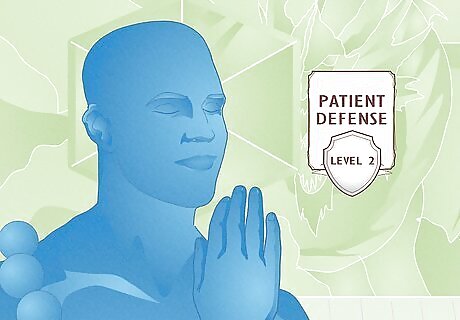
Certain class abilities interact with the dodge action. If you’re playing a monk character, your PC will get the Patient Defense class feature at level 2. This ability lets your monk spend 1 ki point and dodge as a bonus action (rather than an action). The only other ability that affects the dodge action is Dwarven Fortitude, which is a racial feat (available only to dwarf PCs) that lets dwarves spend a hit die to heal themselves after taking the dodge action in combat.
How to Use the Dodge Action as a Player
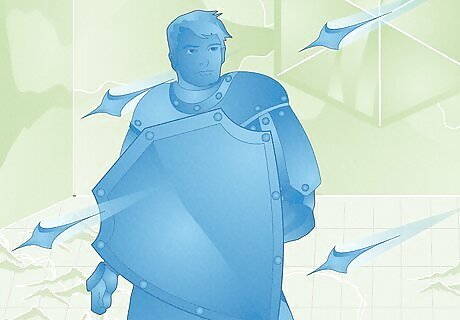
Take the dodge action when playing characters with a high armor class. In D&D, a PC’s armor class measures how difficult it is to hit them—and the higher their armor class, the harder they are to hit. Thus, if your character has a high AC, taking the dodge action is especially effective; an enemy with disadvantage on their attack rolls is even less likely to hit your highly-armored PC. Generally, an armor class between 16 and 20 is considered pretty good, while any armor class above 21 is considered high. So, if your PC’s armor class is 21, the dodge action is more likely to stop incoming attacks. Of course, dodging can also help a PC with a low armor class raise their defenses a little, so don’t discount it even if your PC’s armor class is below a 16!
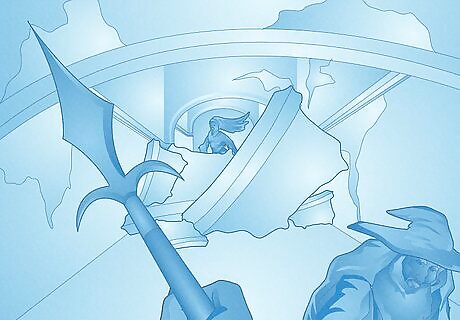
Block passageways while taking the dodge action. If you’re playing a warrior PC (the group’s “tank,” responsible for dealing and taking damage from enemies), blocking off passageways can goad enemies into attacking you. This can be helpful if you need those enemies to leave physically weaker party members (like a wizard) alone. Then, if your PC takes the dodge action, they can draw the enemy’s attention while reducing their chances of actually getting hit.
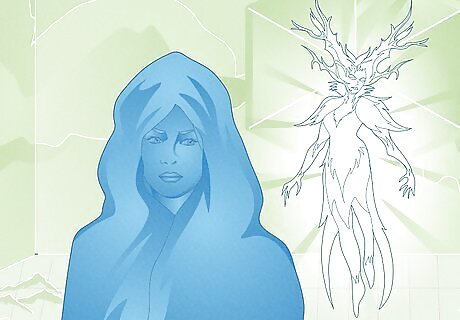
Pair the dodge action with damage-dealing concentration spells. If your PC is a spellcaster with a concentration spell like Spirit Guardians (which deals persistent radiant damage) or Spiritual Weapon (which can be directed to attack single opponents) active, try taking the dodge action. Since your PC can already deal damage with the concentration spell, they can spend subsequent actions avoiding enemy attacks by dodging. This is especially helpful because concentration spells have a chance of ending if your PC takes too much damage—and taking the dodge action can prevent that from happening.
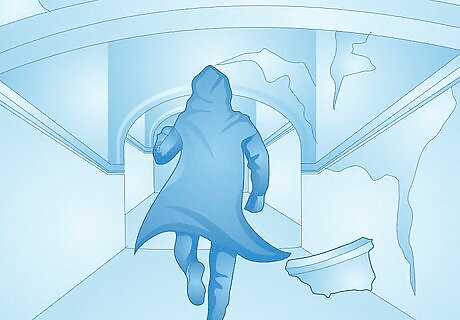
Take the dodge action when you’re planning to run away. Sometimes, your PC may need to escape from an enemy (or group of enemies) in battle. If that’s the case, try taking the dodge action before running away; since dodging affects opportunity attacks, your PC may be able to avoid getting hit, even if several enemies attempt to make opportunity attacks against them in quick succession. If several party members need to run away, consider waiting for the party’s “tank” to run first (while dodging) so they can trigger all opportunity attacks. Enemies can only make a single opportunity attack per round—so once the party tank triggers all of them (and escapes them by dodging), the rest of the party can run away without being hindered.

Use dodge as a default action when there’s nothing else to do. Ever found yourself unsure what to do when it’s your PC’s turn in combat? Whether you’re all out of spell slots or you aren’t close enough to hit any enemies with a weapon, there may be times when you can’t decide how to spend your PC’s next action—and when that’s the case, consider taking the dodge action. It’s a good safety net since your PC’s defenses will be up no matter what happens next.
Using Dodge as a DM

Let enemies recognize when players take the dodge action. If you’re a DM running a battle and a PC takes the dodge action, consider maneuvering enemies (which you control) under the assumption that they can spot the dodging PC. There’s nothing in the official 5e rules about it, so implementing this is primarily your decision as the DM. Still, it’s logical to assume that if a PC dodges an intelligent enemy’s attack, that enemy would be able to tell what they’re doing. For example, if you have an enemy wizard target a PC with a spell that prompts a Dexterity saving throw, and the PC uses the dodge action to succeed, it’s reasonable to assume the wizard is aware of what’s going on. An enemy that realizes a PC is dodging might be more likely to target a different (and more vulnerable) PC instead. Keep in mind that it only makes sense to let enemies realize when a PC takes the dodge action after seeing evidence of it (like the PC dodging an attack successfully). If you let your enemies assume, that’d be unfair to players.

Consider homebrew rules like letting dodge affect grapples and shoves. Homebrew rules are essentially custom rules that you, as the DM, implement. When it comes to the dodge action, players may be more likely to use it if dodging could help them avoid grapple and shove attempts. Plus, it seems logical that if PCs can see a shove or grapple attempt coming (just like a regular weapon or spell attack), they can attempt to dodge it. Another homebrew rule to consider is capping the number of attacks that can be affected by dodge in a single round. For example, if a group of bandits are attacking the PCs and none of their attacks are hitting (partially due to PCs taking the dodge action), you might rule that dodging can only prevent 1 or 2 attacks per round. The Basic Rules of 5e don’t limit the number of times that dodging can impose disadvantage on attacks—but you, as the DM, could set a limit if you want to.




















Comments
0 comment